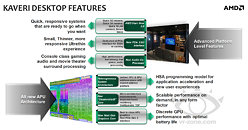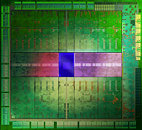
Google's Upcoming Tensor G5 and G6 Specs Might Have Been Revealed Early
Details of what is claimed to be Google's upcoming Tensor G5 and G6 SoCs have popped up over on Notebookcheck.net and the site claims to have found the specs on a public platform, without going into any further details. Those that were betting on the Tensor G5—codenamed Laguna—delivering vastly improved performance over the Tensor G4, are likely to be disappointed, at least on the CPU side of things. As previous rumours have suggested, the chip is expected to be manufactured by TSMC, using its N3E process node, but the Tensor G5 will retain the single Arm Cortex-X4 core, although it will see a slight upgrade to five Cortex-A725 cores vs. the three Cortex-A720 cores of the Tensor G4. The G5 loses two Cortex-A520 cores in favour of the extra Cortex-A725 cores. The Cortex-X4 will also remain clocked at the same peak 3.1 GHz as that of the Tensor G4.
Interestingly it looks like Google will drop the Arm Mali GPU in favour of an Imagination Technologies DXT GPU, although the specs listed by Notebookcheck doesn't add up with any of the specs listed by Imagination Technologies. The G5 will continue to support 4x 16-bit LPDDR5 or LPDDR5X memory chips, but Google has added support for UFS 4.0 memory, something that's been a point of complaint for the Tensor G4. Other new additions is support for 10 Gbps USB 3.2 Gen 2 and PCI Express 4.0. Some improvements to the camera logic has also been made, with support for up to 200 Megapixel sensors or 108 Megapixels with zero shutter lag, but if Google will use such a camera or not is anyone's guess at this point in time.
Interestingly it looks like Google will drop the Arm Mali GPU in favour of an Imagination Technologies DXT GPU, although the specs listed by Notebookcheck doesn't add up with any of the specs listed by Imagination Technologies. The G5 will continue to support 4x 16-bit LPDDR5 or LPDDR5X memory chips, but Google has added support for UFS 4.0 memory, something that's been a point of complaint for the Tensor G4. Other new additions is support for 10 Gbps USB 3.2 Gen 2 and PCI Express 4.0. Some improvements to the camera logic has also been made, with support for up to 200 Megapixel sensors or 108 Megapixels with zero shutter lag, but if Google will use such a camera or not is anyone's guess at this point in time.




































